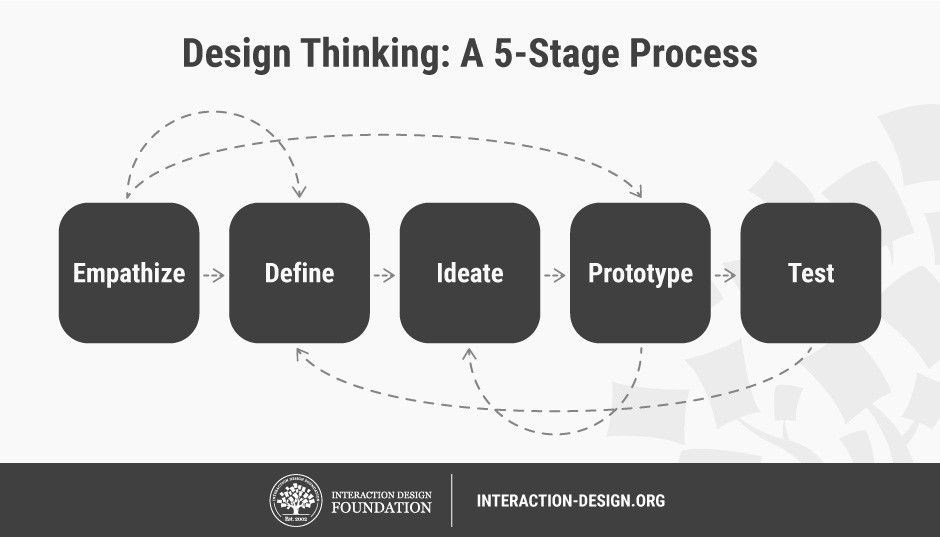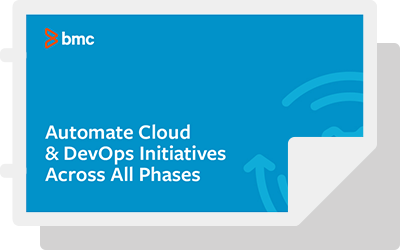It’s hard to know what people want. Who would have guessed the fidget spinner would be such a hit?
Design thinking, lean startup, and agile all aim to understand what people want. The terms are often used together—they are all ways to approach and improve your product cycle. But they work differently and focus on different areas.
- Designing thinking is a process that aims to radically change how you solve a problem by diversifying the design team and fully understanding a specific user.
- Lean startup approaches product improvement and overall production improvement by creating minimal viable products and letting the customer determine value.
- Agile is both a methodology for making and scaling your solution with speedy, incremental releases.

These approaches are often used to help organizations innovate—whether a step-by-step process or a holistic methodology, design thinking, lean startup, and agile are all tools you can use to promote innovation. In this article, we’ll:
- Understand how frameworks can support innovation efforts
- Look at the basic tenets of the three frameworks
- Point you to additional resources for going deeper
Innovation approaches
Each of these methods can support intentional innovation. As the market becomes increasingly cluttered with options, your company must innovate to stand out. But innovation isn’t some magic you can sprinkle about—it requires hard effort. Research finds that the most successful innovation delivers:
- Superior solutions
- Decreased risk and change costs
- Employee buy-in
Each of these alone is hard to do, but design thinking, lean, and agile can help you get there.
Design thinking (Approach a problem)
A problem is a frame of mind. Getting to the solution begins with how you think about the problem.
Solutions teams are often tasked with solving a problem, but that scope usually ignores solving a problem in any larger or more unique way. In this example, a designer was tasked with designing a residential facility for adults with autism. Her initial approach was to answer the question “How can I design for the residents’ disabilities and safety?” But, as she spent time getting to know one user in particular, through the design thinking process, she asked a different question: “How can I design for the residents’ strengths and pleasures, not just their safety?”
Design thinking attempts to uncover a truly unique and useful improvement or solution. Most companies develop a product by eyeing a problem and creating a solution (often one they’ve already hypothesized). This solution, however, might be obvious or it might entirely miss underlying problems. In either case, you’ve failed before you even reach market.
What is design thinking?
Design thinking is a process that organizes the way we solve problems by breaking down the status quo and our own human biases. Anything that you’ve declared “That’s how we do things here” is ripe for design thinking. Asking more interesting questions, according to design thinking, results in more original ideas. After all, defining a problem in an obvious or conventional way can only yield obvious, conventional solutions.
In order to ask more interesting questions, design thinking implements:
- Diversity by bringing in a wide range of people to the design thinking team who wouldn’t normally be involved in change or innovation processes.
- Customer research by spending time thinking about what customers really need—and want—and encouraging us to break down our own biases and attachment to the status quo.
The step-by-step organizational process breaks down large problems into manageable components, so you can focus on any type of solution, no matter the size or scale of the problem:
- Process innovation
- Product invention
- Global challenges
The design thinking process
The designing thinking process has five steps:
- Empathize with your users
- Define the users’ needs, the problem, and your insights
- Ideate by challenging assumptions
- Prototype with basic solutions
- Test those solutions

Each step is limited by time, so you can align the folks who want to skip ahead on the same page with the folks who could explore Step 1 for weeks. Importantly, the process is flexible and iterative. Flexible in that you can set up a design thinking team for one day, one week, or one month. Iterative in that something you might learn in a latter phase can boost an earlier phase, so you might circle back.
If you’re a designer by trade, this might be too rigid and linear for you. But for the rest of the team—the managers and the sales folks and the marketers—this might be exactly what you need to deeply understand your customers.
Lean startup (Develop and test a solution)
The simplest way to have a million dollars is to start with ten. –Old startup proverb
Jennifer really wants a handmade steel bookshelf. She says she’d pay anything just to get her hands on a handmade steel bookshelf. You set out to build it: finding a warehouse, buying all the necessary tools and the best steel, learning new skills, designing it. Finally, months later, you’ve built it.
You return to Jennifer with a beautiful steel bookshelf and try to sell it to her for $800. Jennifer looks at you in amazement, “Wow! You made that? But I just got this Amazon Kindle for $199. I don’t read paper books anymore.” Her tastes have changed and you’re out two years and thousands of dollars and countless hours.
Unfortunately, you never checked in on her needs and whether they changed, and you’re out the cost. This is where lean methodologies come in.
What is lean startup?
The concept of lean startup originated with Lean manufacturing, an approach to increasing efficiency by eliminating waste, that Toyota pioneered in the 20th century. Today, you might hear the terms lean startup, lean thinking, and lean methodologies, especially if you don’t work in manufacturing.
The Lean methodology aims to quickly and iteratively validate a business idea. Don’t put lots of money into a product that you have to wait two years to find out if the market wants or not.
Lean startup elevates the goals of waste elimination, efficient production to quickly validate business ideas and incorporate continuous improvement. Essentially, you identify the big picture associated with each progress phase and using the continuous feedback loop to better engage end users.
By starting lean—literally, efficient or no waste—you can respond faster as the market shifts. Lean encourages short, rapid release cycles to create a minimal viable product (MVP) of whatever you’re working on: product features, a whole new product, a new business model or strategy. By building something small but quickly, you can test new features, products, and markets with minimal cost and risk.
Lean startup concepts
Lean thinking asks these questions:
- What is the minimal viable product your product needs to gauge interest?
- What are the cheapest ways to make the product without heavy investment?
- How can you establish communication between the company and the customer, so an ear is constantly listening for changes in taste?
Once you’ve tested and decided the product is ready for the larger market, you can move into scaling your production.
Agile methodology (Make and scale a solution)
Hard plans don’t adapt to the changing landscape. In the above example, the changing landscape was Jennifer’s need. She first expressed a need for a handmade bookshelf, which you set out to do.
This is where Agile methodologies come in.
What is agile?
Agile developed as a counterpoint to the traditional Waterfall method of building and delivering software solutions. The biggest problem with the Waterfall approach is that you’d learn what the customer needs, take a long time to build it, and finally get your solution on the market—only to learn it’s woefully out-of-date.
Another perspective is that traditional product development was top-down. Executives determined what products to make, and employees created them. This hamstrings the creative process and often results in a misalignment with true customer need.
Agile responds to this by saying “Let us determine what the customers need and let us do it incrementally.” Effectively destroying the concept of a “finished product”, Agile believes in iterative, incremental changes in software development lead, over time, to significant change. Here, agile is more grassroots: let the designers determine what needs to get fixed and improved right now. Over time, those small changes accumulate into a truly useful product that fixes customers’ problems.
Agile environments
These are some characteristics of an Agile environment:
- Works gets completed in short iterations, known as sprints.
- Teams are often self-organized, cross-functional, and based on equality.
- Teams are highly communicative, often with daily meetings sometimes known as scrums.
- Frequent releases of new features or functions.
Agile is itself a methodology, but you can use additional tools to make your team, department, or entire company more agile:
Startup thinking
Design thinking, lean startup, and agile are go-to concepts in the startup community, which is prized for its innovative approaches. Established companies are no different: using one or all of these approaches means you can look at new features from a new frame of mind.
Steve Jobs always said Apple was a big startup, and it is in the adoption, and understanding, of these terms that catalyzes innovation for an organization. Forever be a startup.
Additional resources
For more on innovation and product development in the enterprise, explore our BMC Business of IT Blog or check out these articles:







